Originally published on medium
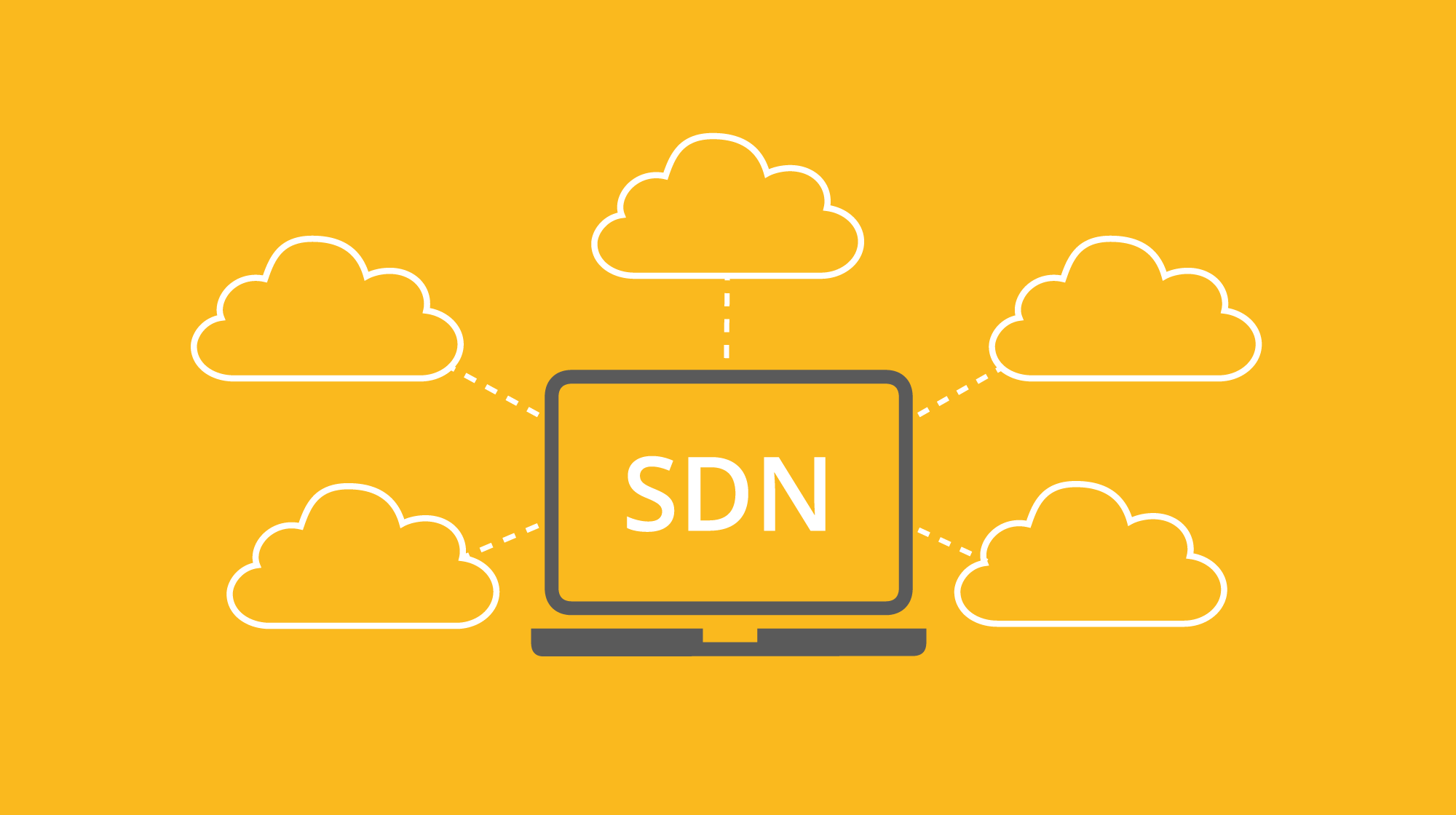
This post contains a simple implementation of a switching hub. Part 1 of this post contains a quick theoric overview.
Set Up
Let’s get into practice.
- First, set up a virtual machine:
I know this can be very tiresome but the tools we are going to install may overwrite some files in your home directory, so avoid the stress and set up a Ubuntu virtual machine.
- Install Mininet
Mininet is a system for emulating a network with particular emphasis on SDNs. Mininet allows one to create a virtual network containing hosts, switches, links, and controllers.
sudo apt-get install mininet
The Mininet will be used to set a test network architecture.
- Install Ryu
A Ryu provides software components with well-defined API that make it easy for developers to create new network management and control applications. Ryu supports various protocols for managing network devices, such as OpenFlow
sudo apt install python-pip
pip install ryu
The Ryu will be used to set the controller.
SDN Example — Switching Hub
To exemplify an SDN we are going to build a Switching Hub. A switch by itself resembles a network hub. Unlike hubs, however, network switches are capable of inspecting incoming messages as they are received and directing them to a specific communications port:
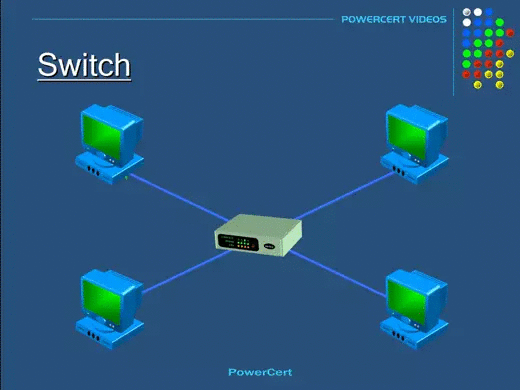
However, we are implementing a Switching Hub, which is a switch that floods all other hosts/devices for the first time that the packet arrives:
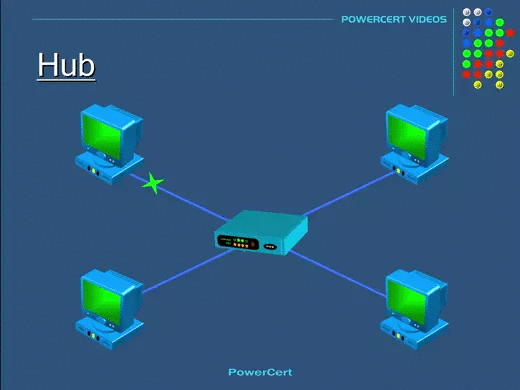
The switching hub has the following functions:
- Learns the MAC address of the host connected to a port and retains it in the MAC address table.
- When receiving packets addressed to a host already learned, transfers them to the port connected to the host.
- When receiving packets addressed to an unknown host, performs flooding.
The switch analyzes the received packets to learn the MAC address of the host and information about the connected port. That being said, when the switch receives a packet from an unknown it acts as a hub, however, if the switch already has forwarded packets from that host once before it will act as a switch.
The learning part is the responsibility of the controller. To achieve this behavior we will use the Ryu implementation of the simple switch. This sample code can be used as a boilerplate to build any other switch variation.
The source code of the switching hub is in Ryu’s source tree:
ryu/app/example_switch_13.py
Environment Building
- [First, build an environment on Mininet:]{#2a45}
sudo mn --topo single,3 --mac --controller remote --switch ovsk
Here’s the output of this command:
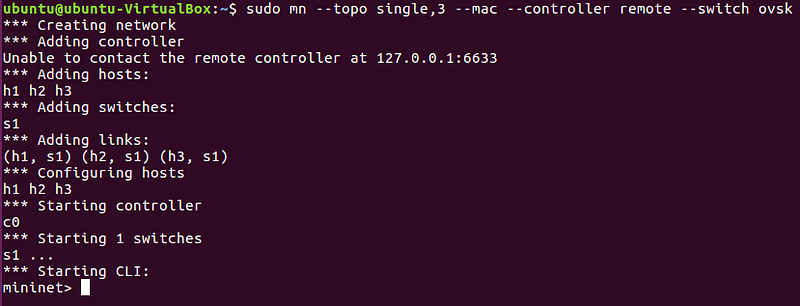
We just created a realistic virtual network with one switch, one controller, and three hosts.
- [Let’s start an xterm for the controller and for the switch.]{#9849}
xterm c0 s1
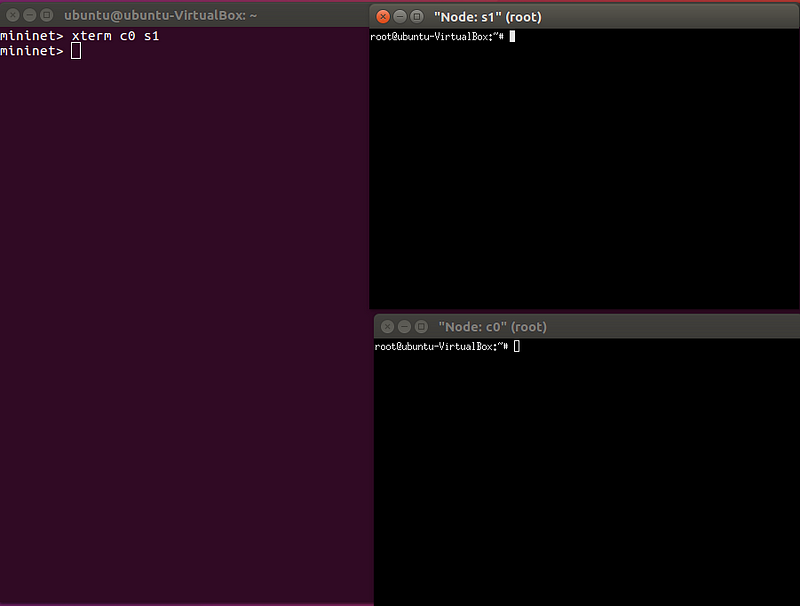
- Next, set the version of OpenFlow to be used on the switch to 1.3:
ovs-vsctl set bridge s1 protocols=OpenFlow13
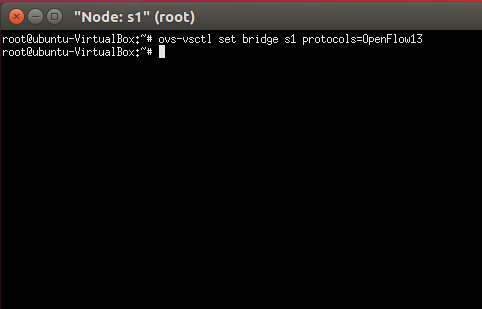
- Then, start example_switch_13 on the xterm of the
controller:
ryu-manager --verbose ryu.app.example_switch_13

Now OVS has been connected, the handshake has been performed, the Table-miss flow entry has been added and the switching hub is in the status waiting for Packet-In.
- Ping from host 1 to host 2:
h1 ping -c1 h2
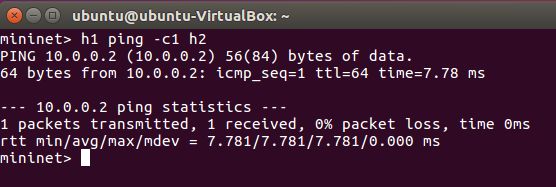
- Now, let’s check the flow table:
ovs-ofctl -O openflow13 dump-flows s1

Two flow entries of priority level 1 have been registered.
- Receive port (in_port):2, Destination MAC address (dl_dst):host 1 -> Action (actions):Transfer to port 1
- Receive port (in_port):1, Destination MAC address (dl_dst): host 2 -> Action (actions): Transfer to port 2
- Checking the log output of the controller:
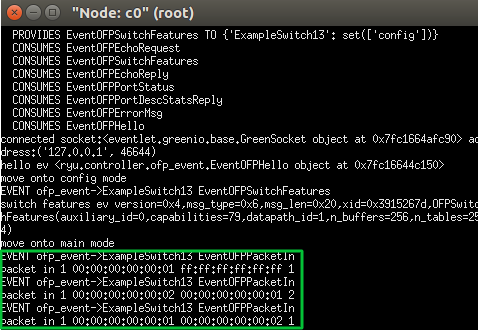
- Running the ping again and checking the log output of the controller again:
h1 ping -c1 h2
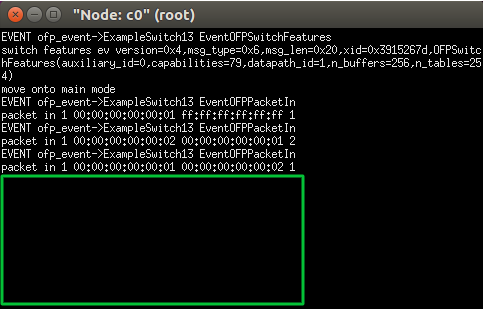
Note that the packets don’t pass through the controller on the second time, showing that the switch learned the packet destination and addressed to the correct host.
*OBS: The switch keeps receiving packets to establish which hosts are ready to communicate, you should ignore these events on the controller log.
Conclusion
We just used the default implementation of a simple switching hub to see how to build a Software Defined Network with a Ryu application running as a controller and using the OpenFlow protocol to control the switch.